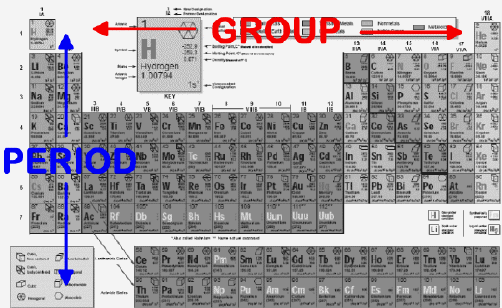 The periodic
table of today lists every single element known on Earth. They are
placed in order of their atomic number (number of protons). The
atomic weigh or more correctly the atomic mass, helps to
predict the properties of different elements. The concept of atomic
weight has changed through time depending on how the number was obtained
by various scientists. Since 1960 the value has been standardized by
chemists, who determine the number using different analytic and
mathematical tools. Today the atomic weight should be referred to as
the atomic mass and the unit of measurement is called atomic mass
unit (amu). The periodic
table of today lists every single element known on Earth. They are
placed in order of their atomic number (number of protons). The
atomic weigh or more correctly the atomic mass, helps to
predict the properties of different elements. The concept of atomic
weight has changed through time depending on how the number was obtained
by various scientists. Since 1960 the value has been standardized by
chemists, who determine the number using different analytic and
mathematical tools. Today the atomic weight should be referred to as
the atomic mass and the unit of measurement is called atomic mass
unit (amu).
Each box on the Periodic Table of the
Elements includes at a minimum, the atomic number, atomic
symbol, and atomic mass. Larger charts can show many other
features using a variety of colors and symbols that help define physical
properties. These properties could include boiling points,
melting point, density, and crystal structure.
Today’s periodic tables vary depending on who may use the table.
The boxes on the Periodic Table are
arranged as a data chart so we can derive information not only on an
individual element but how the elements relate to each other. The
horizontal rows are divided into “periods” (1-7) and the vertical
columns are divided into “groups.” The groups have two
designations 1-18 (new) and 1A-8A;1B-8B (older). However, many
chemists still use the number and letter designation.

|